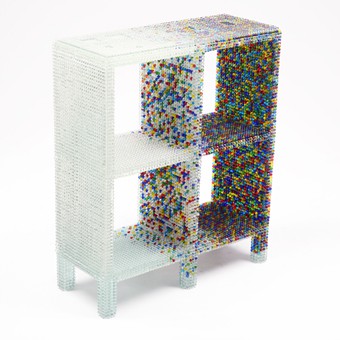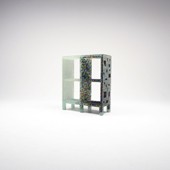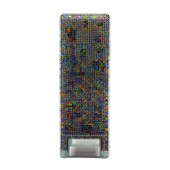
| THE AWARD |
| CATEGORIES |
| REGISTRATION |
| SUBMIT YOUR WORK |
| ENTRY INSTRUCTIONS |
| TERMS & CONDITIONS |
| PUBLICATIONS |
| DATES & FEES |
| METHODOLOGY |
| CONTACT |
| WINNERS |
| PRESS ROOM |
| GET INVOLVED |
| DESIGN PRIZE |
| DESIGN STORE |
| THE AWARD | JURY | CATEGORIES | REGISTRATION | PRESS | WINNERS | PUBLICATIONS | ENTRY INSTRUCTIONS |
Grade B Shelf Conceptual Furniture by Kairo Kusamoto |
Home > Winners > Design #53893 >Interview |
 |
|
FS: What is the main principle, idea and inspiration behind your design?
KK: I thought about the importance of understanding not only linguistically (somehow, cool, pretty etc) about the value the thing has and the value the person finds from things.I am thinking that there are important elements other than the value that can be formulated, quantified and dataable like monetary value and function. As a result, the sense of distance to objets and things is shrinking and I think that it is possible to understand the other side.
FS: What has been your main focus in designing this work? Especially what did you want to achieve?
KK: I incorporate Roland Bart's semiotics and the concept of time in Heidegger's books in my work.As a result,I found value in hierarchy and stratification of the meaning of one symbol and object, and assembled the concept from there. In the concept of time,The act of laborious acts or the act of taking time means that the producer uses the time until his death for production.In other words, production acts can be said to be gorgeous time usage until the death of the author.So I created a delicate object by glass, but at the same time it contains a heavy context of death of the producer.
FS: What are your future plans for this award winning design?
KK: I would like to disseminate works using ideas for work I have acquired in previous studies. This time it was the first presentation outside my home country, so I would like to send it to the outside more.
FS: How long did it take you to design this particular concept?
KK: it was also research verification at my graduate school,it took about 1 year.
FS: Why did you design this particular concept? Was this design commissioned or did you decide to pursuit an inspiration?
KK: At current graduate school ,Based on the research of “Meaning” and “Value” of objects, I have mainly produced furniture .so,this work is also research verification.
FS: Is your design being produced or used by another company, or do you plan to sell or lease the production rights or do you intent to produce your work yourself?
KK: I work myself.
FS: What made you design this particular type of work?
KK: conceptual design method.
FS: Where there any other designs and/or designers that helped the influence the design of your work?
KK: dutch designer and contemporary artist.
FS: Who is the target customer for his design?
KK: People all over the world.
FS: What sets this design apart from other similar or resembling concepts?
KK: Conversion of the value of the symbol. And the plan using the concept of time <life and death> of a person.
FS: How did you come up with the name for this design? What does it mean?
KK: This objec was made with a glass marble(called "B-DAMA" in japan) with a context of a defective item.The marble has come from the name B which is a meaning of a defective item.I attempted to change the meaning that the marbles have, especially by using B-DAMA used in Japan for furniture decoration.
FS: Which design tools did you use when you were working on this project?
KK: glass marbles,acrylic,resin
FS: What is the most unique aspect of your design?
KK: Concept construction and its materialization.
FS: Who did you collaborate with for this design? Did you work with people with technical / specialized skills?
KK: myself
FS: What is the role of technology in this particular design?
KK: I believe that I can create opportunities to think about the problem of time / death, which is far from people head by various information and desires about the value of goods and goods through my work.
FS: Is your design influenced by data or analytical research in any way? What kind of research did you conduct for making this design?
KK: i research about what is the value of design and time. Based on the books of Heidegger and Lolambardt.
FS: What are some of the challenges you faced during the design/realization of your concept?
KK: How to make a structure.
FS: How did you decide to submit your design to an international design competition?
KK: Japan don't have the category of my work and design.
FS: What did you learn or how did you improve yourself during the designing of this work?
KK: I learned that If you are doing productions and designs as compensating acts of time until your death or labor (not being a hobby's saisaku, getting a price as a symbol of death), there is no intention in it, In some cases I would like to make a chance to think about what it means to tailor to the trend.
FS: Any other things you would like to cover that have not been covered in these questions?
KK: nothing
FS: Thank you for providing us with this opportunity to interview you.
A' Design Award and Competitions grants rights to press members and bloggers to use parts of this interview. This interview is provided as it is; DesignPRWire and A' Design Award and Competitions cannot be held responsible for the answers given by participating designers.
| SOCIAL |
| + Add to Likes / Favorites | Send to My Email | Comment | View Press-Release |





